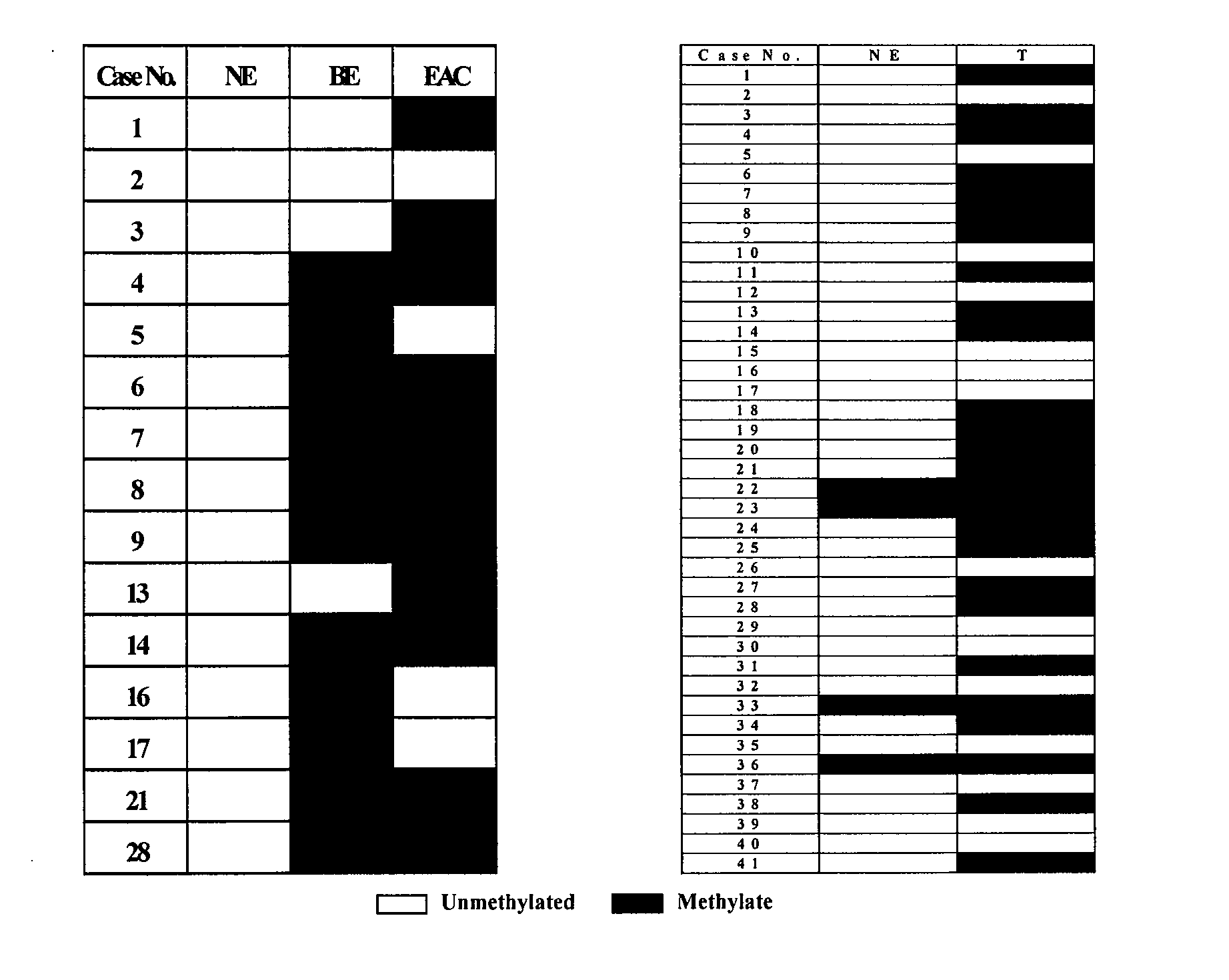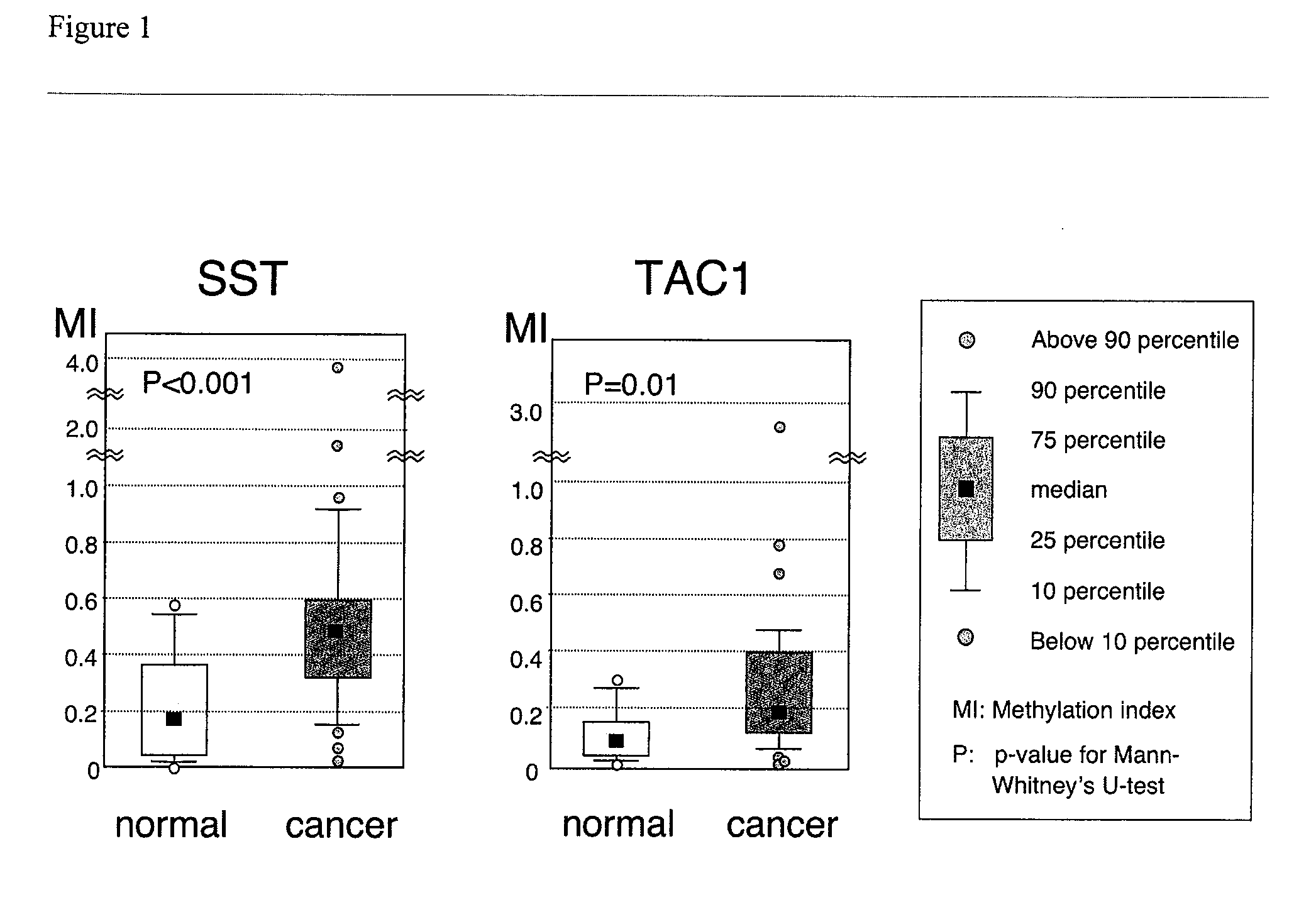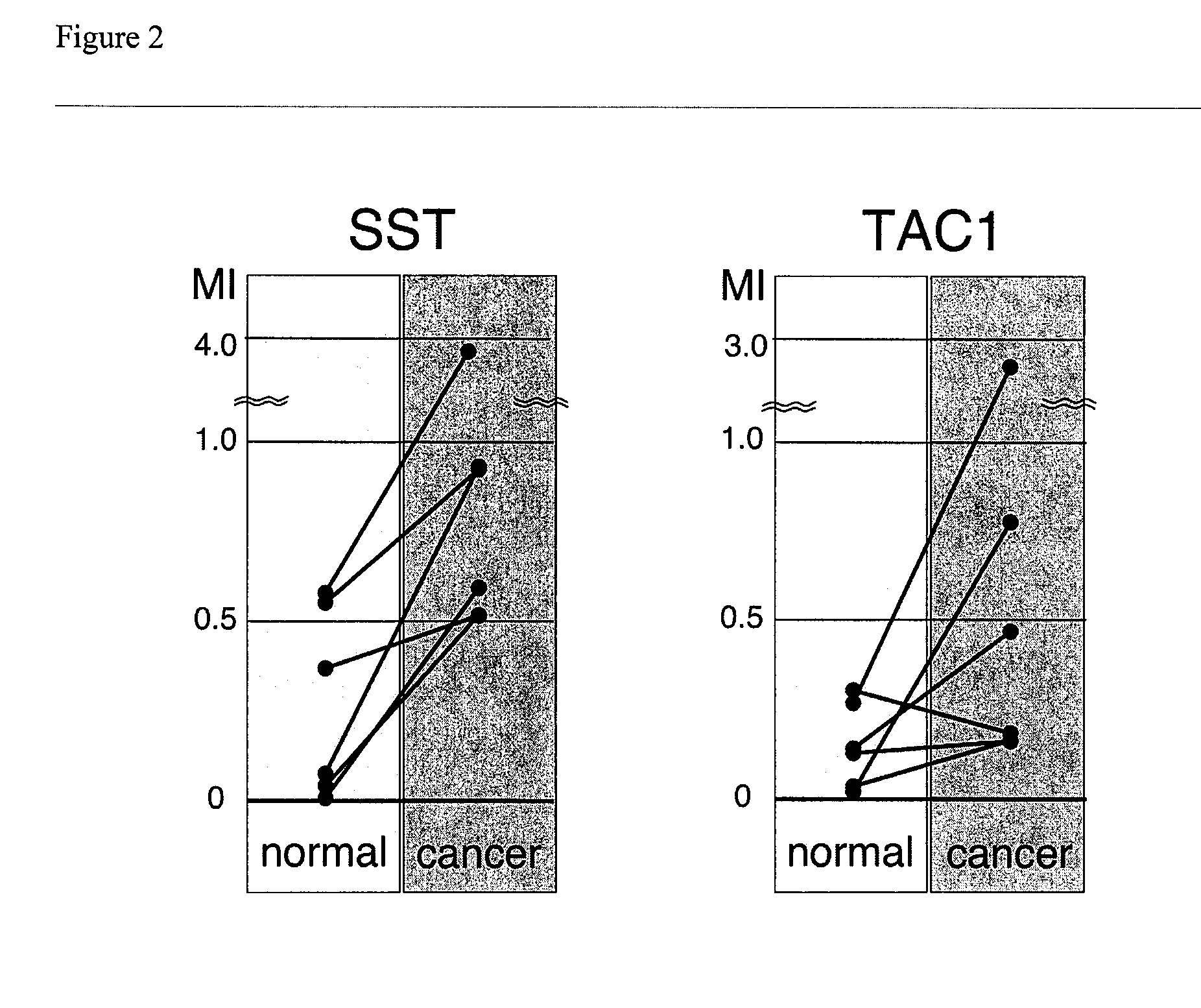Methylated promoters as biomarkers of colon cancer
- Summary
- Abstract
- Description
- Claims
- Application Information
AI Technical Summary
Problems solved by technology
Method used
Image
Examples
example 1
Patient and Sample Selection
[0074] Fifty-six primary human colon cancers, 22 non-cancerous human colon mucosae, and 14 human colon cancer cell lines were selected for study. Colonic tissues were macroscopically dissected to enrich colonic mucosal layers or tumor cells. Genomic DNAs and total RNAs were extracted from snap-frozen tissues. Tumor microsatellite instability (MSI) status was determined based upon 11 microsatellite markers as described previously as previously described (Mori, Y. et al., Cancer Res., 63:4577-4582 (2003), which is incorporated by reference). Briefly, specimens with microsatellite instability (MSI) at 30% or more of informative loci were labeled as microsatellite-unstable (MSI-H), specimens showing MSI at less than 30% of informative loci were labeled as having low-level microsatellite instability (MSI-L), and specimens with no MSI were labeled as microsatellite stable (MSS). All colonic tissues were based upon the availability of a sufficient amount of hig...
example 2
[0097] Patient and Sample Selection
[0098] 67 normal esophagi (NE), 60 Barrett's metaplasias without dysplasia (BE, including 36 obtained from patients with Barrett's only (Ba) and 24 from patients with Barrett's accompanied by EAC (Bt)), 40 dysplasias occurring in BE (D, including 19 low-grade (LGD) and 21 high-grade (HGD)), 67 EACs, and 24 ESCCs were examined. Biopsies were obtained using a standardized biopsy protocol, as previously described. Research tissues were taken from grossly apparent Barrett's epithelium or from mass lesions in patients manifesting these changes at endoscopic examination, and histology was confirmed using parallel immediately adjacent aliquots obtained at endoscopy. All specimens were stored in liquid nitrogen before DNA extraction. In addition, three EAC esophageal adenocarcinoma (BIC, OE33 and SEG) and nine ESCC esophageal squamous cell carcinoma (KYSE 110, 140, 180, 200, 220, 410, 450, 520 and 850) cell lines were examined. These cells were cultured i...
example 3
[0118] Sample and Cell Line Selection
[0119] Of 259 specimens that were examined, 66 were normal esophageal specimens [N, including 19 obtained from non-Barrett's / non-esophageal cancer patients (NE), 20 were from ESCC patients (NEcS), and 27 were from EAC patients (NEcA)]. In addition, 60 specimens were from nondysplastic Barrett's metaplasias without dysplasia {BE, including 36 obtained from patients with Barrett's aloneonly (Ba) and 24 BE obtained from patients with Barrett's accompanied by EAC (Bt)}, 40 were dysplastic Barrett's specimens occurring in BE {D, including 19 low-grade (LGD) and 21 high-grade (HGD)}, 67 were EACs, and 26 were ESCCs. Research tissues were obtained from grossly apparent Barrett's epithelium or from mass lesions in patients manifesting these changes at endoscopic examination, and histology was confirmed using parallel aliquots taken obtained from identical locations at endoscopy. All biopsy specimens were stored in liquid nitrogen before DNA extraction. ...
PUM
| Property | Measurement | Unit |
|---|---|---|
| Temperature | aaaaa | aaaaa |
| Temperature | aaaaa | aaaaa |
| Temperature | aaaaa | aaaaa |
Abstract
Description
Claims
Application Information
 Login to View More
Login to View More - R&D
- Intellectual Property
- Life Sciences
- Materials
- Tech Scout
- Unparalleled Data Quality
- Higher Quality Content
- 60% Fewer Hallucinations
Browse by: Latest US Patents, China's latest patents, Technical Efficacy Thesaurus, Application Domain, Technology Topic, Popular Technical Reports.
© 2025 PatSnap. All rights reserved.Legal|Privacy policy|Modern Slavery Act Transparency Statement|Sitemap|About US| Contact US: help@patsnap.com



